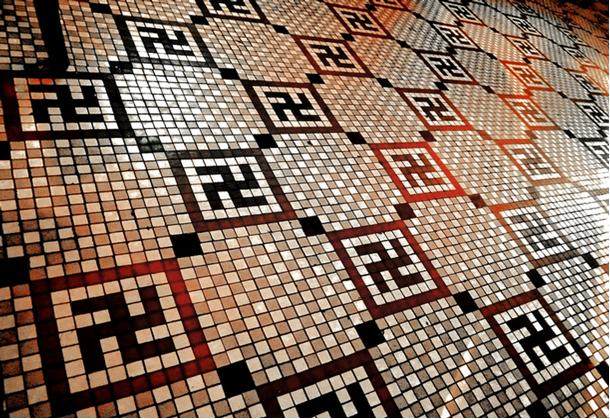
Swastika in american buildings and historical monumnets
In my previous article, we saw the ancient Hindu symbol swastika in American churches and universities. Swastika was used as a good luck symbol or the symbol of good fortune not only in India but all around the world. In this article, we will explore the use of swastika symbol in ancient American monuments and historical places.

Swastika on Laguna Bridge
In Colorado River between Arizona and California, is a Laguna bridge with forty-seven swastika on the edges of the bridge. Built in 1905, this was the first dam constructed on Colorado River so as to use its water for farmers on either side of the river i.e. California and Arizona. Because of swastika inscription, this dam is also known as "Indian weir dam." By Indian, they may be referring to Native Americans or they may be talking of the Indian subcontinent- the birth place of swastika symbol. This bridge was built by US Bureau of Reclamation. According to the US Bureau of Reclamation, the architect of this dam wanted this dam to be unique. He visited India to get an idea on the various suitable designs of the dam should be. The final design was inspired by a bridge in India. Since swastika is popular in India as a good luck symbol, architect decided to adopt this symbol in his design.
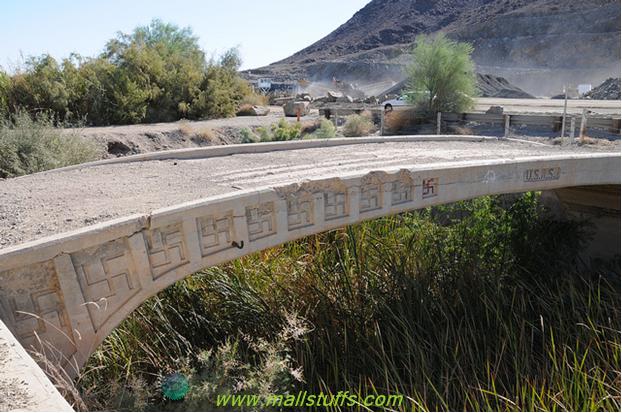
Laguna Bridge
Swastika in Los Angeles
In city of Glendale in Greater Los Angeles, there are about 930 iron lamp-posts with swastika designs at bottom base in circle.
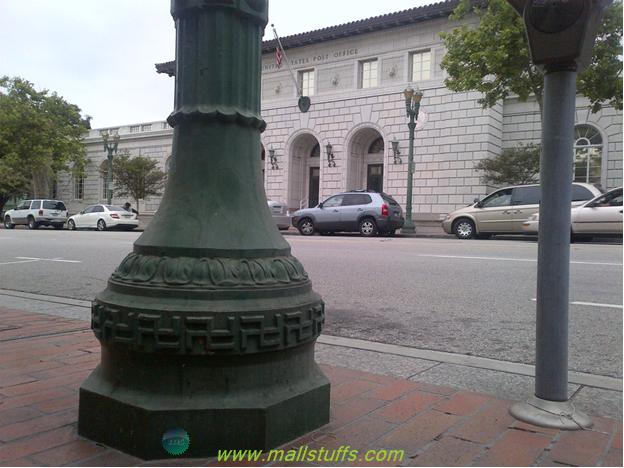
One of such iron post lamps
These lamp-posts are supposed to be built in 1920, way before the start of world war ll. All the design features of the lampposts including the right facing swastika were approved by the city mayor in the early 1920s.
Swastika in Colorado, California
Another swastika shaped architectural piece can be seen in Colorado, California. If you search for a U.S Naval base in Google maps, then you will find L shaped buildings forming the swastika. Mr. segol called this swastika buildings as the government conspiracy to honor the nazist party. John mock, architect of the building later ridiculed these allegations by calling his buildings as L-shaped buildings instead of sacred swastika.
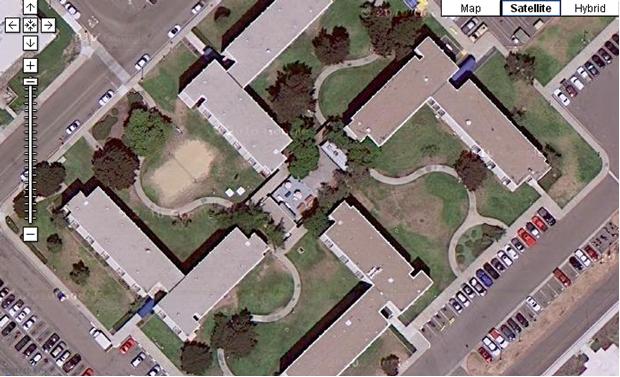
Amphibious navy base in Colorado, California
Swastika in Denver International Airport
From below, Denver International Airport llooks like any other modern airport but if you look from above or from google maps, then you will find the airport runway constructed in the shape of swastika. Since this airport was built-in 1995 much later after the world war, there are many conspiracy theories and stories related to the airport designs and construction. Some even claim this airport to be designed and built by the Illuminati as the headquarters for the global genocide to trigger the New World Order. However, this swastika shaped runway deigns makes it the most efficient layout for an airport short of space and money.
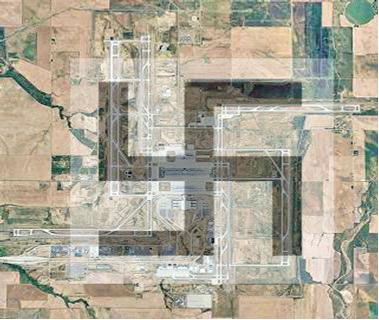
Denver International Airport
Swastika in New York City
Completed in 1914, the Cliff Dwellers Apartment in New York City has two swastikas, with arms pointing to the left. This building is well known for its western themes like mountain lions, buffalo skulls and rattlesnakes and other Native American symbols.
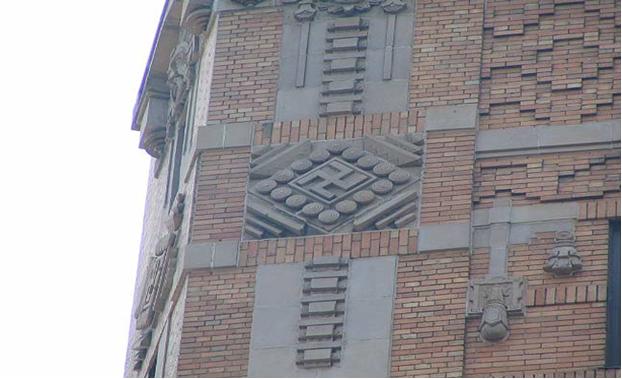
Decorative swastika can also be found in the subway of New York City station at Columbia University. Built in 1904, many ceramic mosaic designs with border of decorative swastikas can be found.
Swastika at James Garfield memorial in Ohio
In 1890, a tomb and memorial in Cleveland Ohio, dedicated to assassinated US president, James Garfield contains swastika tile patterns throughout the floor. The 180-foot tall building was called as Garfield monument and was added to the National Register of Historic Places in 1973.
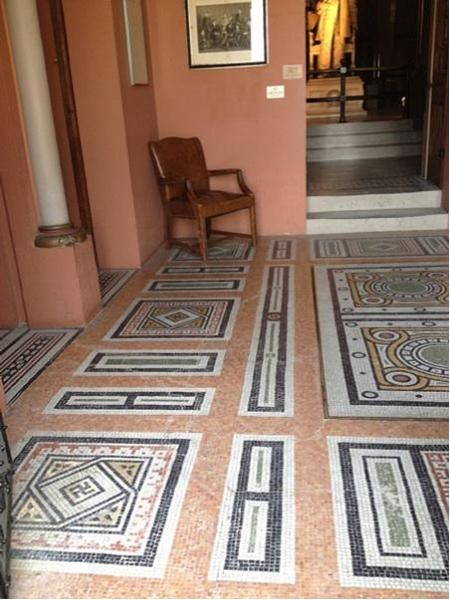
Tile patterns of Garfield Monument
Swastika at Montana club
Montana club in Helena, Montana is the oldest social club in the northwest region of America. Swastikas can be found at the entryway of the Montana club which was later rebuilt in 1905 using the design of the architect Cass Gilbert. The building shares architectural similarities with the Metals Bank Building in Butte, designed by Gilbert at the same time. Swastikas tiles were uncovered during the recent maintenance work at the Montana Club post which the club authorities added a note at the entrance door of their club. This site was added to the National Register of Historic Places.
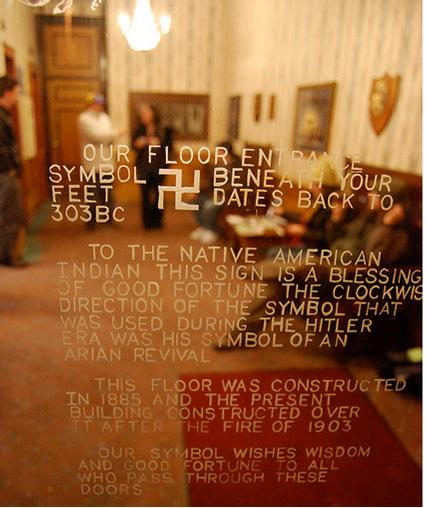
Entrance door of Montana club
Swastika in New Mexico
In Albuquerque region of New Mexico, there is a theatre called kimo theatre, which is commonly known as the “architectural gem” of the city. Built in 1927 in the Pueblo Deco style, this building includes many Native American design including swastikas with right facing arms. When attempts were made to remove this swastika from this building, this theatre was added to the list of the National Register of Historic Places in 1977.
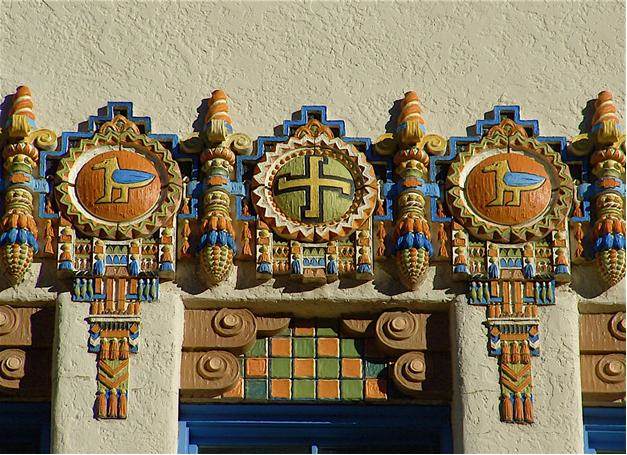
kimo theatre
Another hotel of New Mexico called as Shaffer Hotel has decorative left and right facing swastika besides other Native American symbols and architectural designs. Mr. Shaffer built a hotel out of wood which promptly burned down. So, in 1923, he built another hotel, this one out of cast concrete and various bits of iron that he collected from wherever he could. But the fact that the Shaffer Hotel is made of concrete is almost entirely obscured by its ornamentation, a mesmerizing mixture of Native American symbolism, fantastic creatures, and menacing characters of unknown origin. Because of extensive use of many ancient designs, this place has been listed on the National Register of Historic Places.
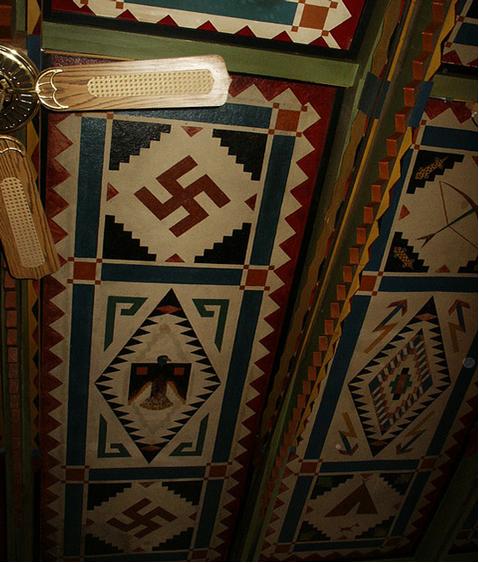
Decorative left and right facing swastika at Shaffer Hotel
Swastika in South Dakota
In 1907, a massive palace named as Corn Palace was built in Mitchell, South Dakota. On one of the towers of this palace, there is a swastika design besides elaborate murals of South Dakota grain, corn and grasses on the exterior of this building.
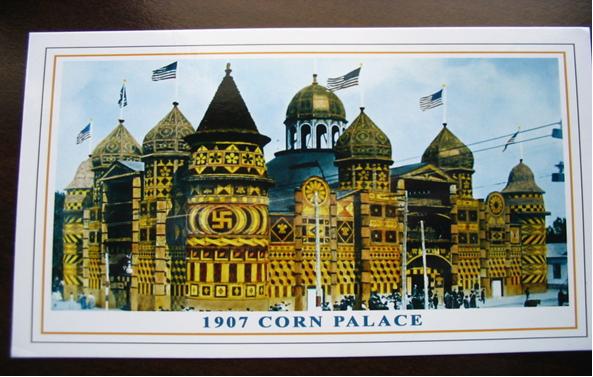
It is a popular tourist destination, visited by more than 500,000 people each year. Each year, the Corn Palace is celebrated with a citywide festival, the Corn Palace Festival. Considered as the historical masterpiece, this palace was added in the National Register of Historic Places.
Also, In Rapid City of South Dakota, Native American Swastika decorations can be found in the lobby of the Hotel Alex Johnson.

Swastika decorations in Hotel Alex Johnson
This hotel was built by a railroader who had a flair for luxury and a deep appreciation of the Sioux Indian culture. The Germanic Tudor exterior mixed with the Lakota/Native American and railroad interior theme makes for a unique mix of decor. Alex's magnificent lobby features an original chandelier of warrior spears, hand-painted ceramic tiles in traditional Sioux designs, and ceiling patterns taken from Sioux beadwork. Opened in 1928, this hotel is listed on the National Register of Historic Places.
Swastika in Philadelphia
Completed in 1928, Perelman Building is considered as "one of the finest Art Decoration structures of Philadelphia". Initially, this building was the headquarters of the Fidelity Insurance Company, but now a part of the Philadelphia Museum of Art. Chief architect, lee Lawrie came up with the design of this building with beautiful decorative swastika theme. The Entrance to the Philadelphia Museum of Art has a walkway with a swastika meander pattern. This building was added on the National Register of Historic Places in 1973 and the Philadelphia Register of Historic Places in 1980.
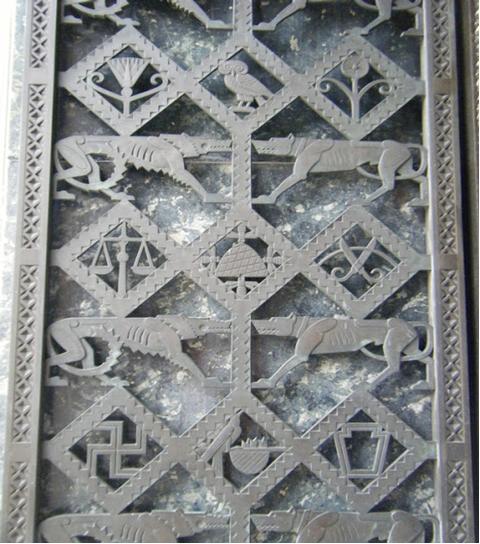
Perelman building
Many colored floor tiles with swastika designs can also be found in the Plays and Players Theatre of Pennsylvania. This theater was added to the National Register of Historic Places in 1973.
Swastika in Greeley Museums
Swastika quilt patterns were very popular in America before the start of World War 2. In 2010, Greeley museum received a quilt covered with 27 swastikas as donation. According to the museum registrar, this swastika quilt pattern was also known as Catch Me If You Can, the Battle X of Thor, Devil's Dark Horse, Whirligig and Zig Zag". This quilt was publicly displayed on museum only after the decision of museum officials on what context to be shown on swastika quilt.
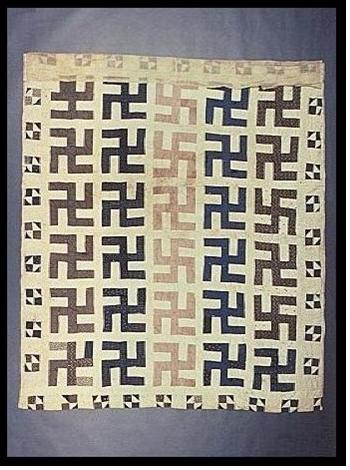
Swastika quilt
This quilt was stitched with love and care most likely to provide comfort and warmth to a family staying in prairie region. Designed in 1900, the Creator had no idea that this 66-inch-by-80-inch quilt would one day be considered as the symphony of the world most hated symbol. This quilt has 27 swastikas in varying colors of red, yellow, cream, orange, pink etc. This quilt was donated to Greeley Museums late last year. Museum officials say the quilt was built long before the adoption of swastika in Nazis national flag.
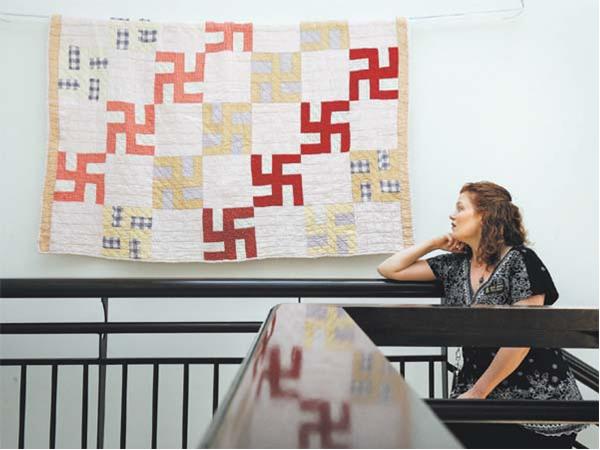
Another Swastika quilt
Swastika in Hawaii
Built in 1929, disk-shaped left and right facing swastikas can be found at the top of columns on the Alexander & Baldwin building in Honolulu, Hawaii.
Swastika in Detroit public library
Built in 1939, swastika designs can be found on the exteriors of Michigan downtown public library, Detroit. Beautiful, old, pie shaped, architecturally restored library in a prime downtown spot dedicated to all things automotive in the heart of the Motor City. It is definitely a great landmark in Detroit, simply because it houses so many books and artifacts. There are about three floors, and also a basement that hosts an auditorium.
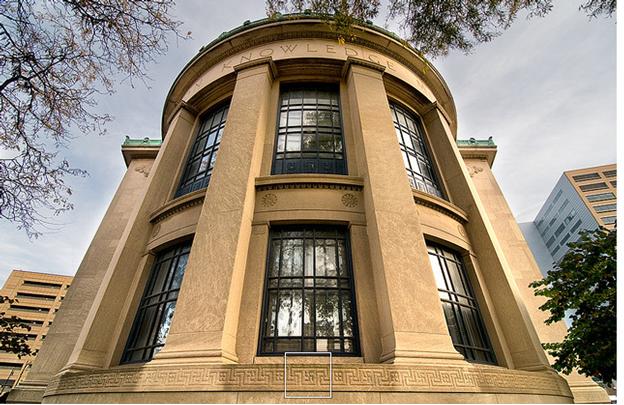
Detroit public library
Swastika in Houston
Built in 1918, Tiles with swastika patterns can be found at the entryway of the Carlton Apartments in Houston, Texas.
Swastika in Nazareth's library
On the floors of Nazareth's library, a number of symbols including swastikas can be found. This library was built long before the rise of Nazism and the important point to note is that Swastika is left facing as opposed to right facing swastika used by Hitler.
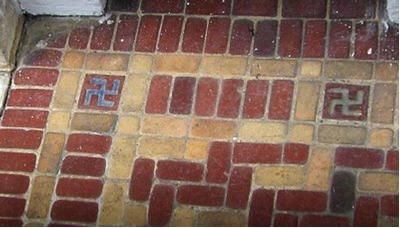
Nazareth's library
Swastika in Rochester, Minnesota
Five storied building constructed in 1917, the Plummer house in Rochester, Minnesota includes well decorated elaborated swastika tiles.
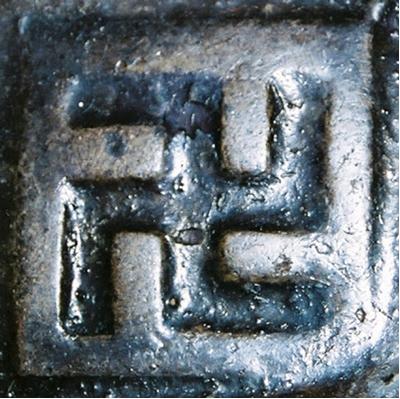
Swastika at Plummer house
Thomas Ellerbe, a second generation architect of the firm Ellerbe Backet, designed this house. In 1975, this house was added in the list of Places. This house was named after Dr. Henry Plummer , a prominent figure in the history of the Mayo Clinic . The house includes many innovations that were quite novel for their time, including a central vacuum system, underground sprinkler system, intercommunications system, dumbwaiter, electricity and gas lighting, the first gas furnace in the city, garage door openers, heated pool, water tower, and two underground caves going into the house and the water tower. The 5 story home is over 300 feet (91 m) long, with 49 rooms including 10 bathrooms, 9 bedrooms and 5 fireplaces.
Swastika in Kansas
In Kansas City of Missouri, multi-colored swastika can be found at the exterior of a Chinese restaurant dated back to the early 1930s. Local Jewish publication reacted by saying "You know, the swastika does predate Nazism. Short of any Nazi context, I don’t think you should find it offensive.”
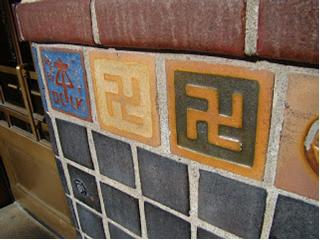
Swastika in Idaho
Alternate swastika tiles can be found at the Bonneville County courthouse at Idaho built in 1920. Due to objection by some Jewish communities, a case was issued in court to remove these tiles. Historian of the Idaho State Historical Society commented “This symbol can be removed though the courthouse has been listed on the National Register of Historic Places since 1979 but they should stay and people should see these symbols in the historical context.". “When you take something out of historical context, you can argue that it was bad,” said Julie Braun, a local historian. “But it wasn’t bad at the time.” In September 2009, Court official finally decided to leave the tiles as it is.
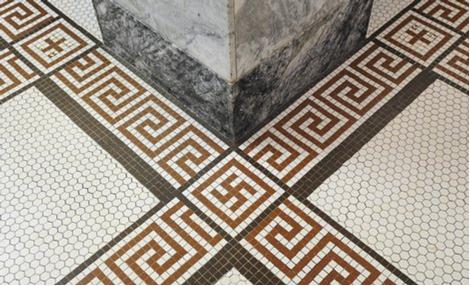
Swastika in Redwood City, California
Built in 1910, San Mateo History museum, a “regional history center” in Redwood City, California is designed to look impressive as San Francisco City Hall.". This museum is accredited by American association of museums and is also listed on national register of historic places. This museum has many mosaic tile floors with swastika designs. In 1925, swastika tiles were included in the design of Mission Beach Plunge swimming pool.
